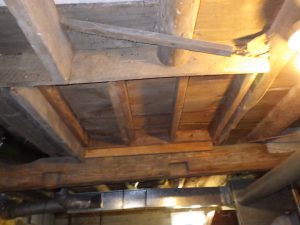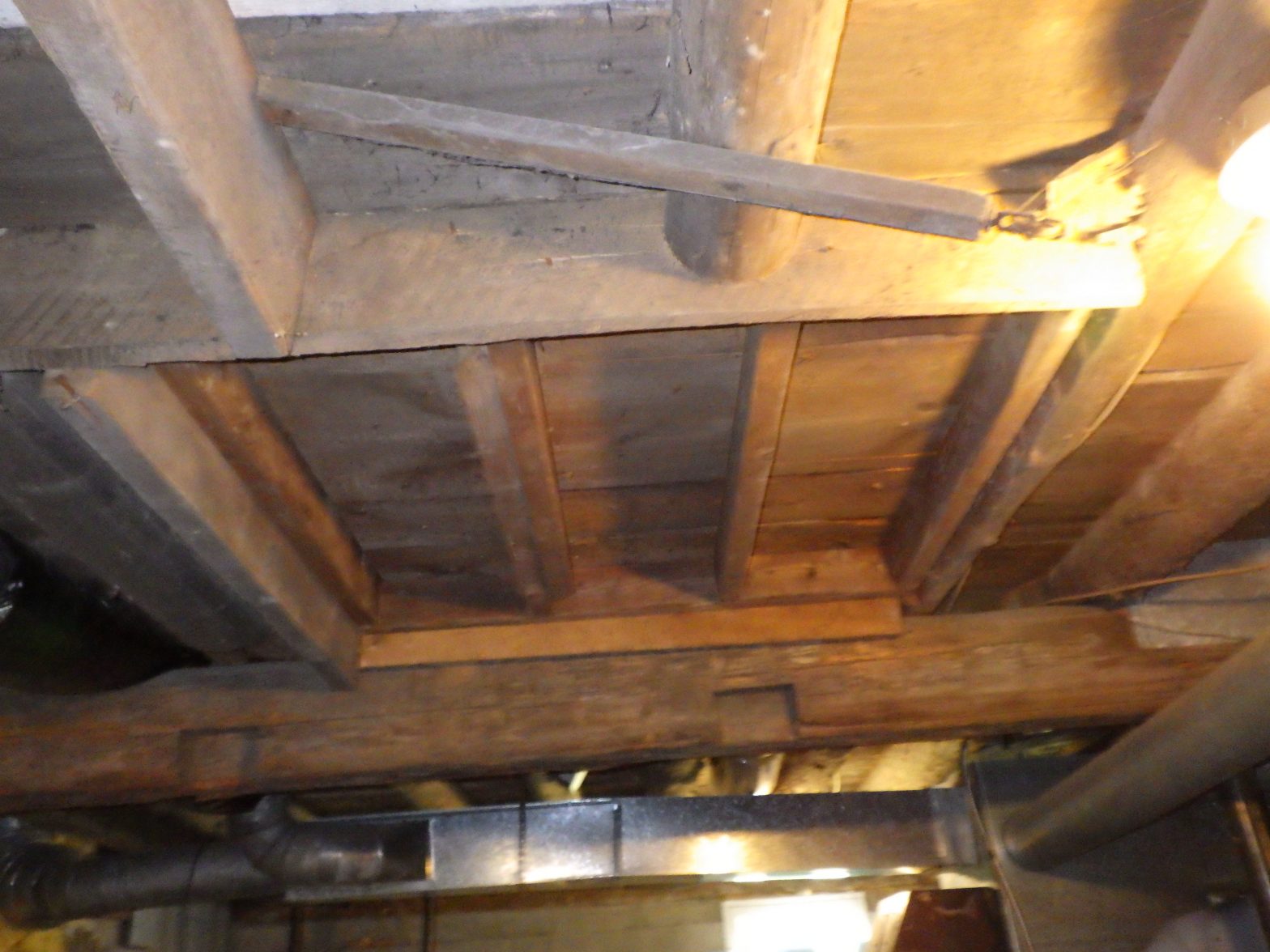 Strong demand for real estate purchases and renovation of existing buildings has resulted in a lot of recent calls for structural or foundation condition assessments. These engagements vary in scope depending on the purpose and the conditions to be assessed, but they typically involve a site visit followed by the issue of a report. Sometimes they are intended to assist the buyer of a property with due diligence either in response to an issue raised by an inspector or as a stand-alone structural condition survey. Sometimes they are to aid a seller in responding to a buyer’s concerns. Sometimes the purpose is to evaluate the cause of distress and to develop remedial options. And sometimes they function as feasibility studies for additions and other major alterations. Whatever the motivation, a portion of the increase in condition assessment calls has come from inexperienced prospects, some of whom have wildly unrealistic expectations. On multiple occasions, either during the initial call or after receiving the proposal, I have heard prospective clients express their assumption that the assessment they requested would require “just an hour or two” of professional services.
Strong demand for real estate purchases and renovation of existing buildings has resulted in a lot of recent calls for structural or foundation condition assessments. These engagements vary in scope depending on the purpose and the conditions to be assessed, but they typically involve a site visit followed by the issue of a report. Sometimes they are intended to assist the buyer of a property with due diligence either in response to an issue raised by an inspector or as a stand-alone structural condition survey. Sometimes they are to aid a seller in responding to a buyer’s concerns. Sometimes the purpose is to evaluate the cause of distress and to develop remedial options. And sometimes they function as feasibility studies for additions and other major alterations. Whatever the motivation, a portion of the increase in condition assessment calls has come from inexperienced prospects, some of whom have wildly unrealistic expectations. On multiple occasions, either during the initial call or after receiving the proposal, I have heard prospective clients express their assumption that the assessment they requested would require “just an hour or two” of professional services.
This assumption is wrong, of course, and reflects a common misunderstanding about how structural engineers solve problems. Much of the public, as well too many architects, civil engineers and contractors believe that structural engineers design from memory, like the general contractor on your favorite home improvement program who always knows what is and is not “code”. They expect the structural engineer to be able to look at a structure and make a pronouncement as to its adequacy on the spot like the contractor on television. Some do not understand the purpose of structural engineers at all since contractors supposedly have the same knowledge, but they can build the building as well.
In reality, when designing structures, structural engineers are responsible for satisfying performance standards defined by codes and standards while at the same time considering constructability, economy, sustainability and any other objectives of the client. To accomplish this requires making predictions about the behavior of structures. However, real structures are composed of materials with uncertain properties and are configured in ways that cannot be precisely analyzed. Structural engineers have numerous mathematical models to assist in predicting structural behavior, but they are limited approximations that require the simplification and idealization of structural geometry and properties. This process is an art that requires not only knowledge and skill, but judgment derived from experience. There is a lot more to it than memorizing a few entries of a prescriptive span table.
Applying methods of structural engineering analysis to the assessment of an existing structure is an art unto itself. Traditional, non-engineered construction consists of structural systems that were sized empirically based on generations of experience. While the builder might have had little concept of structural mechanics, if built correctly, these structures would perform reasonably well for their intended purpose. Traditional construction does not always conform to modern codes and standards; sometimes it is impractical to use modern methods to predict their behavior. In addition, if the original construction or subsequent modifications strayed from traditional methods – a common occurrence as traditional methods were supplanted by more modern methods in the early twentieth century – the behavior of the structure might differ considerably from what was intended by the builder. The path of loads through the structure might not be readily apparent. Deterioration, both visible and concealed, can further complicate the qualitative understanding of an existing structure. Generally, it is impossible to reach even the level of relative certainty attainable when designing a new structure.
It may sound like structural assessment is futile or would inevitably result in findings that are too uncertain to be actionable or too conservative to be practical. That is not the case, however. In most cases, the client’s question can be answered, at least in part, by making effective use of the available information. This takes time and usually cannot be done in the field. At a minimum, data collected in the field needs to be reviewed, contextualized and interpreted. Sometimes, photographs reveal something that was not visible in the field. Sometimes conditions observed in different parts of a building point to a common cause. Supplementary information such as old maps, codes and standards from the time of construction and other literature can be used to piece together when the building was constructed, some of the details of construction, and perhaps even design or construction criteria. Conditions that cannot be observed often must be inferred from the available information. Inferences drawn from field observations and historical context can be used to develop a qualitative understanding of the structure, help differentiate original construction from alterations, evaluate the effects of deterioration and damage, and identify deviations from expected performance. Quantitative questions about load-carrying capacity usually require calculations. Because of the uncertainty associated with the existing conditions, a greater degree of thought and judgment must precede the calculations than is typical for new design. Once performed, the calculations and underlying data and assumptions should be checked before being used as a basis for findings or recommendations.
The findings and recommendations from engineering investigations are usually issued in writing, however, the exact form of the report depends on the specifics of the project. Written and sealed reports are sometimes required by the laws and regulations of the applicable jurisdiction. Sometimes it is necessary to have a report prepared to demonstrate to a third party, like a lender or building official, that the assessment was performed. Generally, however, reports are necessary to communicate the results of the assessment. Usually, the report must memorialize the scope and methods of the assessment, the uncertainty in the results and any qualifications and limitations of the findings and recommendations. This information cannot be reliably communicated in the field. In addition, recommendations from engineers are often executed by others, like contractors. Disputes can arise if verbal findings and recommendations are misconstrued or miscommunicated to third parties. Therefore, the use of written reports is an important risk management measure benefiting all parties.
It is also necessary to understand that structural engineering practices are businesses and must cover their costs to stay open. To do so they must sell their time at a profit. Time is associated with an initial client call or email. There is some time required in devising a scope and fee for a particular engagement and formulating an agreement. There is also some effort involved in project administration and billing. The project’s revenue must pay for the time associated with these incidental tasks in addition to the time required to complete the project, along with any incremental contributions to the firm’s overhead. For small projects, the time required for the incidental tasks is disproportionately large. In addition to not generating revenue, the incidental tasks for small projects can present opportunity costs. Therefore, every engineering practice has some minimum project fee below which they cannot take on the project. I do not know of anyone who can take on a one- to two-hour assessment as a stand-alone project.
Structural engineers are professionals who like other professionals must perform to a level of skill and care of other professionals in the same field providing similar services. Rarely can this standard be met by a drive-by assessment or a site visit followed by brief off-the-cuff remarks. But even if the problem to be assessed is simple enough to be solved entirely in the field, it may be risky and financially impracticable for a structural engineer to do so. Clients sometimes think that their questions are uniquely simple and subject to yes-or-no answers, but reality is almost always more complicated. It is in neither the client’s nor the structural engineer’s interest to fail to take the time to answer the question at hand and report the results. The efforts associated with analyzing available information and communication after a site visit are not incidental; they are fundamental to the process of performing an assessment. Just because the client does not see the entire effort, does not make it unnecessary or fictitious.
The information and statements in this document are for information purposes only and do not comprise the professional advice of the author or create a professional relationship between reader and author.
